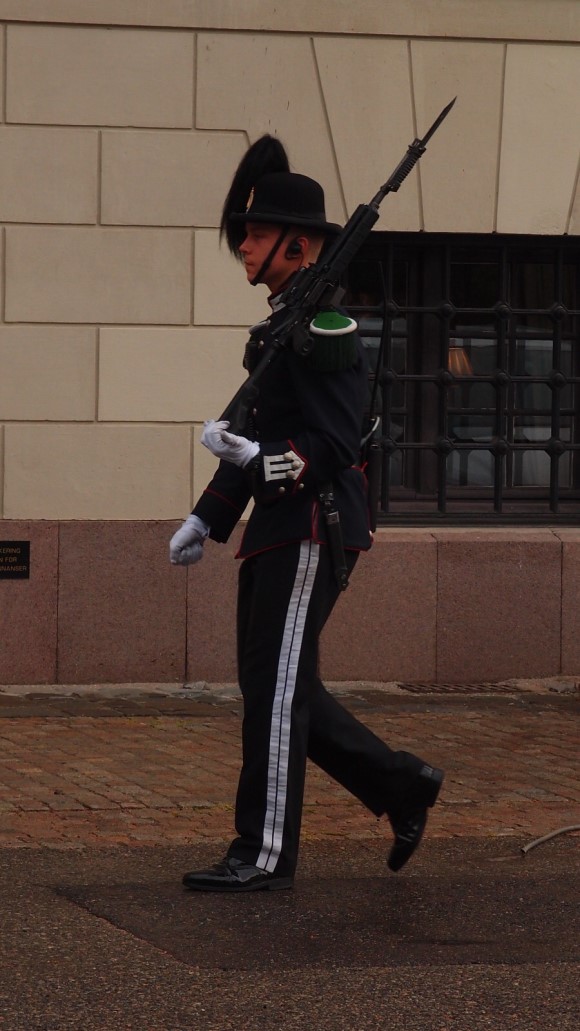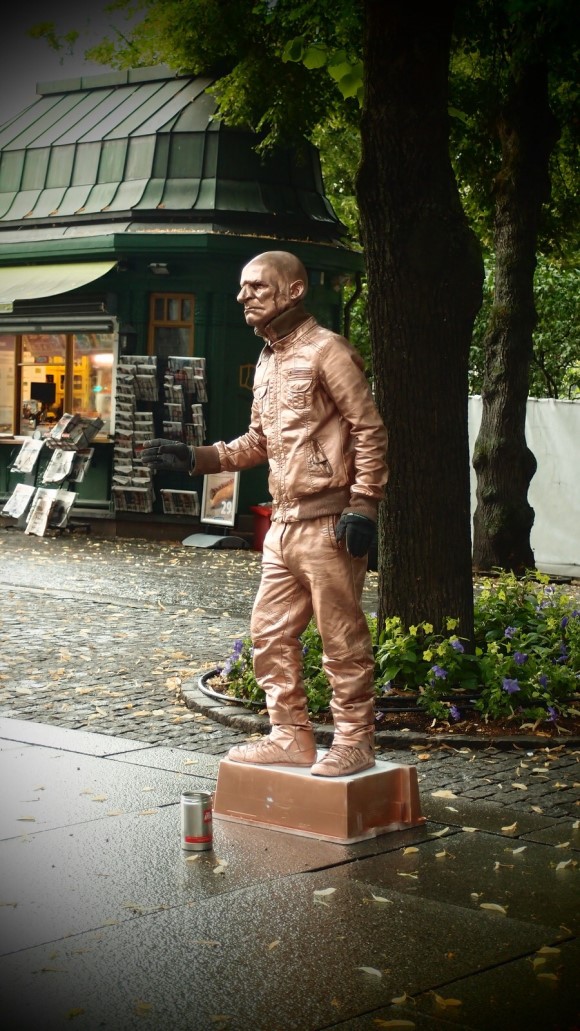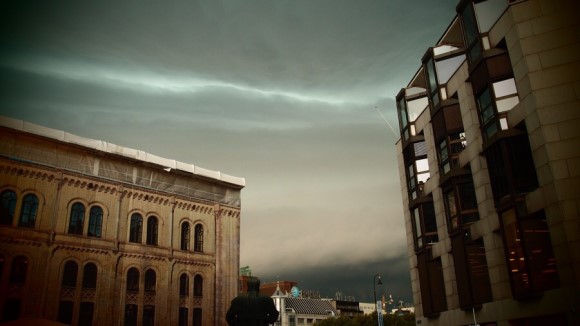A Journey to Escape the Heat: A 2013 Summer Trip through Finland, Sweden, Norway, and Denmark
This travelogue was updated in 2020. Please note that operating hours can vary depending on the season and that there may be regular closure days as well as closures on specific holidays such as Christmas, Epiphany, and New Year's Day. Therefore, when planning your schedule, be sure to check Google Maps or the official websites directly. I spent 3 nights and 4 days in Norway, but with all the travel time, it felt more like 2 nights and 4 days. It was a bit of a blur—like I saw a lot, but also missed out on a lot. In Oslo, I had planned to visit major attractions like the Royal Palace, the National Gallery, Vigeland Park, the Historical Museum, and the Museum of Contemporary Art. Unfortunately, time wasn't on my side. So, I decided to skip entering the Royal Palace, just take a stroll around it, and visit the National Gallery in the same area. I packed my bags, checked out, and headed out.
However...
If I had known how the weather would turn out that day, I would have gone straight into the National Gallery and stayed there. It would have been a peaceful way to end my trip to Norway.
@ Slottet
Open_ 10:00~17:00 (The Royal Palace in Oslo is open to the public during the summer. As of 2020, from June 20th to August 23rd. July 3rd, 20th, Aug 19th 13:00~, Aug 14th 12:00~)
Guidtour_ Daily 12:00, 12:15, 13:00, 13:15, 14:00, 14:15, 16:00 in English, The Norwegian-language tours are conducted every 15 to 20 minutes and last about an hour. It seems that entry is only possible through these guided tour programs.
Fee_ 140 NOK (Sonya art stable combination ticket is 200 NOK)
Close_ June 20~23th
The Royal Palace in Oslo is currently the residence of the Norwegian royal family. The monarchy in Norway dates back over 1,000 years. Harald Fairhair, considered the first king of Norway, is believed to have unified various regional rulers into one realm around 885. Since the time of Harald Fairhair, Norway has had over 60 notable royal dynasties. The current monarch belongs to the House of Glücksburg, which has ruled Norway since 1905.

Norway's national history stretches back centuries, but as a modern independent state, it is relatively young. In 1380, Norway and Denmark merged under a single monarchy, but Norway was in a subordinate position and fell under Danish rule. This union persisted until the aftermath of the Napoleonic Wars, when the union dissolved in 1814, allowing Norway to briefly become an independent state and draft its own constitution. However, just a few months later, Norway became subject to Sweden, sharing a king and a common foreign policy.
In 1905, the union between Norway and Sweden was dissolved, and Haakon VII ascended to the Norwegian throne, marking the beginning of modern Norway's independence. The Royal Palace in Oslo is the residence of the royal family, where most official events are held. However, the royal family also has residences in other regions, including Trondheim, Bergen, Stavanger, and Vig. The Royal Palace is a significant symbol of Norwegian history, particularly in the context of events after 1814.
The Royal Palace in Oslo, known as "Slottet," has a rich history and serves as a symbol of Norway's monarchy. Construction of the palace began in 1824, with the foundation stone laid by King Carl Johan on October 1, 1825. Originally intended as the residence for King Carl Johan, the palace was only completed after his death, with King Oscar I officially beginning its use in 1849. During its construction, financial difficulties caused by the Norwegian Storting (Parliament) led to work being halted at times, and the original plan for an H-shaped building was modified to a U-shape due to budget constraints.
The exterior of the palace was completed by the summer of 1836, and the final design was executed in the 1840s by Danish architect Hans Linstow. However, during the union with Sweden, the palace was rarely used until 1905, when King Haakon VII arrived in Norway. Recognizing that the palace was inadequate for the new royal family, significant improvements were made, including the addition of royal apartments with modern amenities like bathrooms.
By the early 1990s, under King Harald V, the palace underwent a major renovation due to its deteriorating condition. The electrical system was outdated and unsafe, the kitchen and sanitary facilities had not been updated since 1906, and working conditions for the staff were substandard. Additionally, the fire alarm system, firewalls, emergency exits, and structural integrity were all found lacking. A comprehensive renovation plan was implemented in 1993, with the exterior completed by 1999 and the interior by around 2001.
Today, the Royal Palace is state-owned and functions as the residence of the King and Queen of Norway, as well as the headquarters for the daily operations of the monarchy. It is where the King presides over the Council of State, hosts banquets and official dinners, and accommodates visiting foreign dignitaries. Visitors can witness the changing of the guard at 13:30, a popular attraction for those exploring the palace grounds!

As I made my way from the Royal Palace toward the National Gallery, I encountered something that was quite new to me at the time—street performances, or busking. Back in Seoul, I wasn't sure if this was a common sight, but here in Oslo, it seemed to be a regular part of the city's vibrant street culture.
Performers filled the parks, streets, squares, and even metro stations, each bringing their unique talent to the public. Some were playing musical instruments, others singing, and a few were standing perfectly still, dressed as statues. This last one particularly caught my attention. I remember staring at one of these 'living statues' for a long time, trying to figure out if they were really human. The level of stillness and the artistry behind their costumes and makeup was mesmerizing.
It was fascinating to see how these performers interacted with the crowd, often relying on tips as their form of income. This was my first experience with street performances, and it left a lasting impression on me. The city felt alive and full of creativity, with art spilling out from traditional venues like museums and galleries into the public spaces for everyone to enjoy.

My Epic Travel Misadventure in Norway
As the final day of my Norwegian journey unfolded, the sky transformed into something out of a disaster movie. Dark clouds swirled into a menacing shade, and it felt like a thunderstorm was about to erupt any second. The sky was unlike anything I’d ever seen—utterly intimidating. And then, as if on cue, the heavens opened up and unleashed a torrential downpour.
I had an umbrella, of course, but it was packed away in my suitcase. In the middle of the storm, I couldn't exactly stop and dig it out. To make matters worse, my suitcase was an old model with just two wheels and a plastic body, which didn’t handle the cobblestone streets of Oslo very well. On the bright side, my clothes were in vacuum-sealed bags, so at least they stayed dry.
Desperately seeking shelter from the relentless rain, I dragged my suitcase along the rugged European streets, only to have one of the wheels give out on me. Ever tried pulling a 26-inch suitcase with one wheel? It's an ordeal I wouldn't wish on anyone. I even thought about scavenging for the broken wheel to see if I could reattach it, but the chances of it working were slim. It was a moment of bitter humor—there I was, drenched and struggling with a half-broken suitcase while a child in a nearby restaurant watched with fascination. At least I provided some entertainment!
With no other options, I decided to skip the National Gallery and head straight to Oslo Central Station. But Norway wasn’t done with me yet. My train ticket from Oslo to Copenhagen seemed straightforward—except that I had a rude awakening when I reached the platform. Instead of a train, there was a bus parked on a road outside the station. I was bewildered. A bus? For my train journey to Copenhagen?
I assumed maybe I had to catch this bus to another station, so I handed my ticket to the driver and hopped on. But as we left Oslo, the bus veered away from the city, heading out on a highway. Thirty minutes turned into an hour, then two hours, and eventually almost three. My bladder, which had been signaling for a pit stop since the rainstorm, was now at its limit. Anyone who’s ever been in a similar predicament knows the struggle. Even in Korea, I’d never asked a bus driver how much longer to the next stop, but here I was, desperate and asking.
Finally, we arrived, and I discovered that the bus had dropped me off in Gothenburg, Sweden, not at a train station for my onward journey. For anyone planning a trip from Oslo to Copenhagen, be aware that your route might involve a bus transfer. I had bought a ticket thinking I would only need to switch trains, but evidently, I was wrong.

댓글
댓글 쓰기